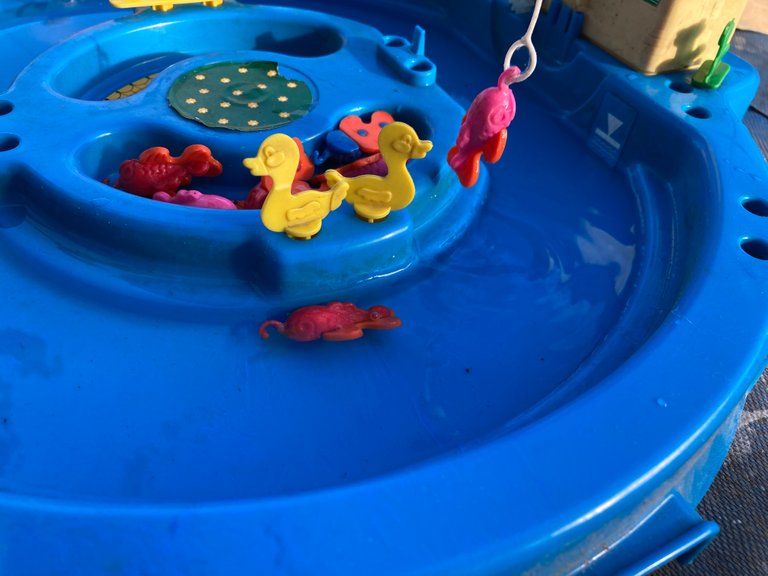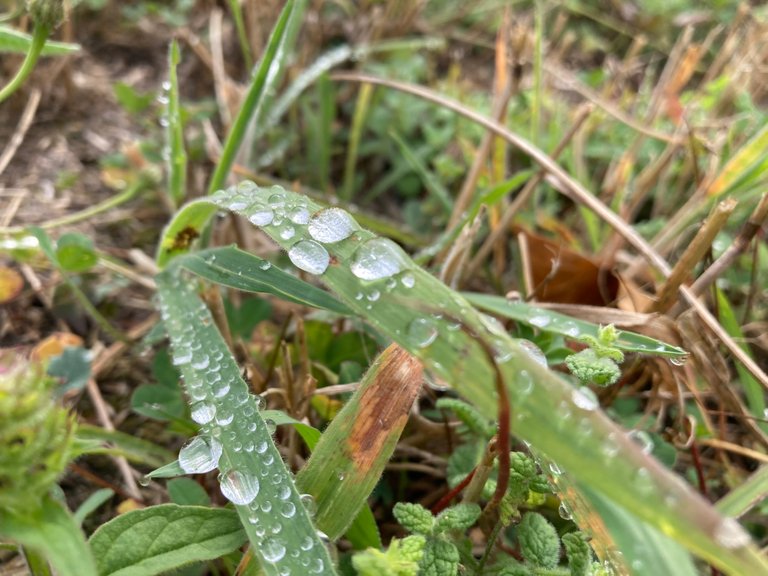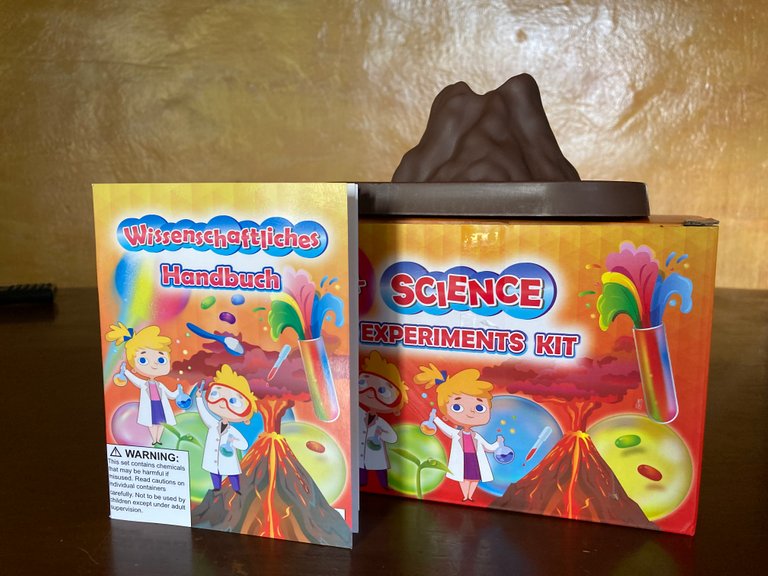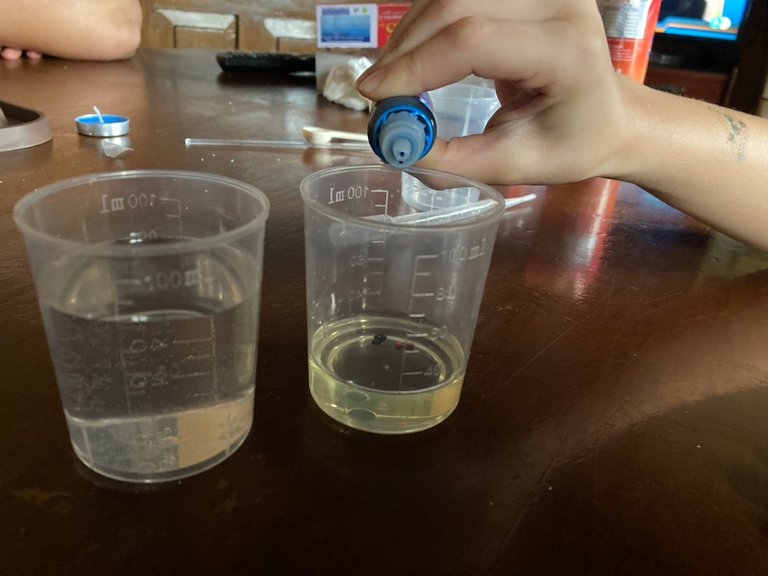Enjoying teaching science to my 8-year-old cousin (ESP/ENG)


Qué orgulloso me siento de mi prima Natalia, de 8 años de edad y por su gran curiosidad científica.
Esta tarde hemos estado jugando con un antiguo juguete llamado pica pez que consiste en capturar peces de plástico en un estanque con una pequeña caña de pescar.


En un memento determinado movimos el juego y se cayó agua sobre la hierba y se quedó mirando la hierba mojada y las gotas que se depositan sobre ella y fue entonces cuando me preguntó lo siguiente.

¿Por qué se quedan las gotas de agua sobre la hoja?
Entonces fue cuando intenté explicarle que hay sustancias y materiales que repelen el agua y, por tanto, son hidrófobas y le intenté explicar que la parte externa de la hierba tiene grasas que protegen el interior de la hierba para que esta no se pueda disolver.
La cara de mi prima era de asombro y fue entonces cuando recordé que teníamos un juego de química en casa en el que venían 3 experimentos o juegos que utilizan este principio físico de la repulsión del agua.

Experimento 1: El Arena que no se moja
Dentro del kit de ciencias viene una bolsa de arena de color verde.

Esta arena al tacto es como cualquier arena
Sin embargo, al añadirla sobre el agua esta no se moja y como se ve en la fotografía, el agua no interactúa con la arena al estar fabricada con plástico.

Experimento 2: Creando un arcoíris
En este experimento sobre un lecho empleamos 80 mL de agua y 20 mL de aceite.

Añadimos unas gotas de colorante rojo, azul y naranja sobre el aceite

Posteriormente, agitamos formando minúsculas gotas de colorante en el aceite debido a que el aceite repele al tinte acuoso. Otro ejemplo de hidrofobia.

A continuación vertemos el aceite sobre el agua, de forma que la capa de aceite queda sobre la de agua sin mezclarse, por el ser el aceite hidrófobo.
Al cabo del tiempo las gotas de tinte van atravesando la capa de aceite hasta llegar a la capa de agua y el tinte se va disolviendo en el agua formando una especie de arcoíris al ir mezclándose los colores.

Experimento 3: Perlas de colores
Este experimento es a la inversa del anterior. Ya que emplearemos 80 mL de aceite y en distintos recipientes mezclamos agua con el tinte de distintos colores.


Al añadir gotas de tinte sobre el aceite, este repele las gotas de tinte, pero estas se depositan en el fondo del vaso.

Añadiendo gotas de varios colores conseguimos un lecho de perlas de tinte.
Conclusión
Con estos tres experimentos, pase un rato muy divertido con mi prima de 8 años de edad y pude explicarles el principio de hidrofóbicas y porque una sustancia se disuelven en agua y otra, por el contrario, son repelidas.
Un saludo y feliz fin de semana.

How proud I am of my 8-year-old cousin Natalia for her great scientific curiosity.
This afternoon we were playing an old toy called "pica pez", which consists of catching plastic fish in a pond with a small fishing rod.


At a certain moment we moved the game and water fell on the grass and he looked at the wet grass and the drops that had fallen on it, and it was then that he asked me the following question.

Why do the drops of water stay on the leaf?
I tried to explain that there are substances and materials that repel water and are therefore hydrophobic and I tried to explain that there are fats on the outside of the grass that protect the inside of the grass so that it cannot dissolve.
My cousin's face was astonished and I remembered that we had a chemistry set at home with 3 experiments or games that used this physical principle of water repulsion.

Experiment 1: The sand that doesn't get wet
In the science kit is a bag of green sand.

This sand feels like any other sand.
However, when water is added, it does not get wet and, as seen in the photo, the water does not interact with the sand because it is made of plastic.

Experiment 2: Making a rainbow
In this experiment on a bed, we use 80 ml of water and 20 ml of oil.

We add a few drops of red, blue and orange dye to the oil.

We then stirred, forming tiny drops of dye in the oil because the oil repels the watery dye. Another example of hydrophobicity.

Then we pour the oil over the water, so that the oil layer remains on top of the water layer without mixing, because the oil is hydrophobic.
After a while, the drops of dye go through the oil layer to the water layer and the dye dissolves in the water, forming a kind of rainbow as the colours mix.

Experiment 3: Coloured beads
This experiment is the reverse of the previous one. We will use 80 ml of oil.

But in different containers we mix water with the dye.

When we add drops of colour to the oil, the oil repels the drops of colour, but they remain at the bottom of the glass.

By adding drops of different colours, we get a bed of coloured beads.
Conclusion
With these three experiments I had a lot of fun with my 8 year old cousin and was able to explain to her the principle of hydrophobicity and why one substance dissolves in water and another is repelled.
Greetings and happy weekend.


View or trade
BEER.Hey @castri-ja, here is a little bit of
BEERfrom @pixresteemer for you. Enjoy it!Did you know that <a href='https://dcity.io/cityyou can use BEER at dCity game to buy cards to rule the world.
No solo Natalia aprendió, yo también je,je,je excelente como hicieron sus experimentos. Gracias por compartirlo. Saludos.
Gracias por el comentario
Un saludo
!PIZZA
Yay! 🤗
Your content has been boosted with Ecency Points, by @castri-ja.
Use Ecency daily to boost your growth on platform!
Support Ecency
Vote for new Proposal
Delegate HP and earn more
How fun!
Reviewed and approved for an Ecency boost
Thanks
!LUV
@melinda010100, @castri-ja(1/3) sent LUV. | connect | community | HiveWiki | NFT | <>< daily
! help(no space) to get help on Hive. InfoCongratulations @castri-ja! You have completed the following achievement on the Hive blockchain And have been rewarded with New badge(s)
You can view your badges on your board and compare yourself to others in the Ranking
If you no longer want to receive notifications, reply to this comment with the word
STOPCheck out our last posts:
$PIZZA slices delivered:
@castri-ja(1/5) tipped @florecitamejias